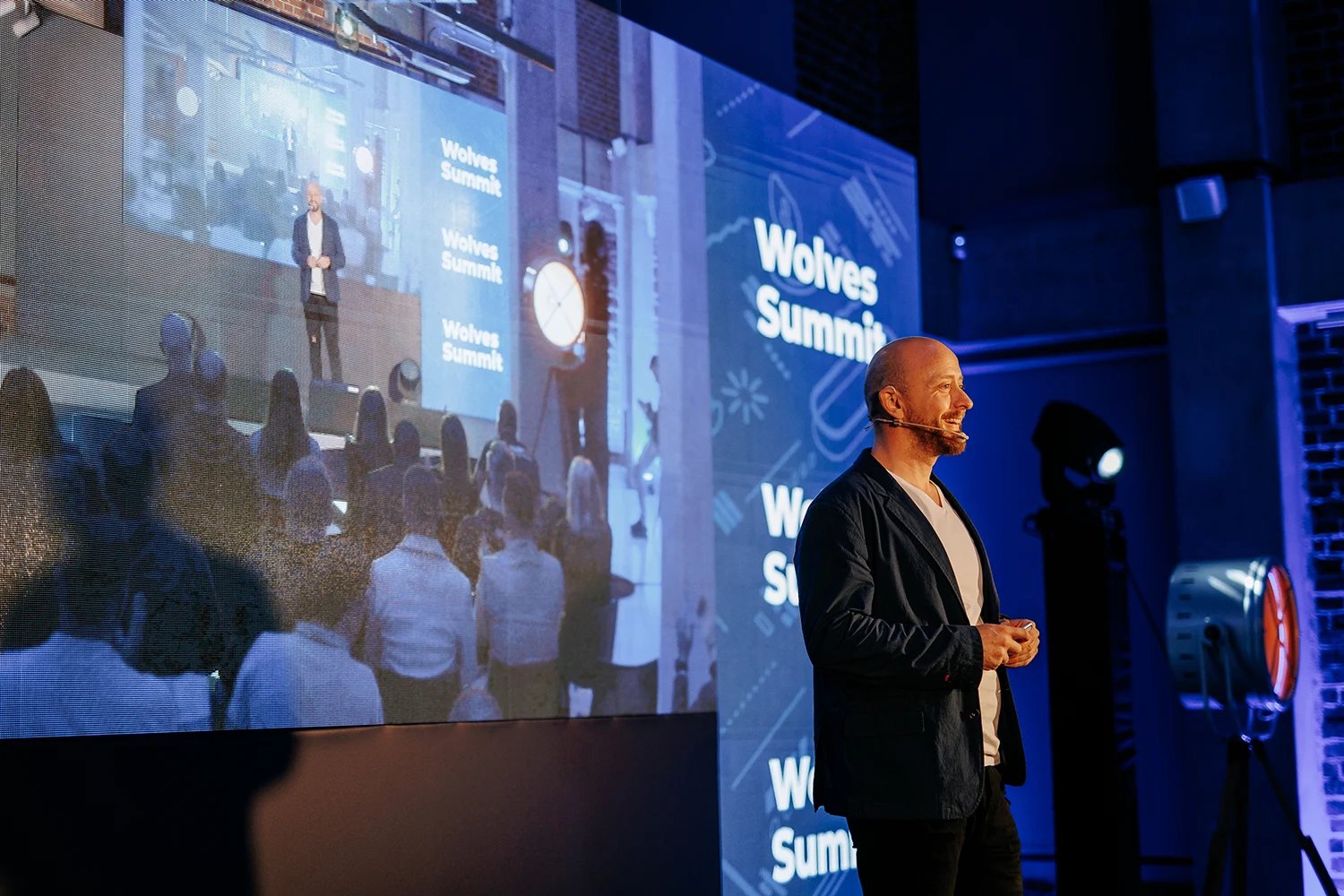2020 was the start of a new age of radical change for the event industry.
Even now, at the beginning of 2022, there are still qualms and uncertainties around the industry. For instance, the upcoming social restrictions and how they will affect the business in the foreseeable future.
Event organizers are still on the fence about their event format and tech stack of choice, torn between the in-person conferences their attendees crave and the safest virtual solution to face the current ever-changing circumstances.
The questions still linger: will we go back to in-person for good? How soon? Do we settle for virtual events for the time being? And what about the hybrid format?
Amid the uncertainty, one thing is sure, the event industry never slows down, and event professionals must learn to keep up with it.
That’s why we’ve gathered 30+ event stats that will help you evaluate the current state of the industry, predict the upcoming trends, and discover the best practices to plan incredible events in 2023, no matter the format.
Here they are!

In-person vs. virtual, what story do our event stats tell?
To start things off, our event stats reveal that in 2021:
- The virtual format was the most prevalent, scoring 84.1% of the total events hosted by Brella in 2021. (Brella, 2021)
- The second place goes to hybrid events, with 18.8% of events organized with Brella. (Brella, 2021)
- The in-person format comes third with 5% of in-person events hosted in 2021 with Brella. (Brella, 2021)
In 2021, we witnessed the rise of new Covid-19 variants with the requisite social restrictions, so these event stats don’t come as a surprise. The virtual format, after all, was the perfect backup letting thousands of attendees come together in total safety.
On the other hand, with the rolling out of Covid vaccines and the ease of restrictions in late 2021, we also lived through what seemed to be a steady return to the in-person format.
After almost two years of virtual 1:1 meetings and live streams behind a computer screen, it isn't surprising to see people slowly but surely gathering face-to-face again.
The following event stats put this in-person craving into numbers with:
- 83% of Americans currently working from home reporting they miss attending in-person meetings and conventions. (EventMarketer, 2020)
- 78% of Americans currently working from home saying they plan to attend as many or more live events when it is safe to do so. (EventMarketer, 2020)
- When it comes to hybrid events, 57% of attendees say they would rather attend as part of the live audience. (Markletic, 2021)
Let's admit it, we're all counting the days until we can get together again, and in-person events will be back eventually - it's not a matter of if, it's only a matter of when.
Yet, event stats also give insights into how virtual events can still play a significant role, mainly when used in conjunction with the in-person format.
- 67% of businesses plan virtual events in conjunction with in-person events. (Markletic, 2021)
- 45.7% of marketers state that the primary goal of virtual events is lead generation. (Markletic, 2021)
Audience engagement: these recent event stats tell us all about it.
Audience engagement is the new norm of the event industry, no matter the event format.
Engagement happens when attendees turn from silent spectators to actors. In other words, the more your attendees network, make new relevant connections, and do business at your event, the higher the engagement and CSAT score will be.
The following event stats speak loud and clear as to why you should invest in fostering audience engagement.
- 49% of marketers state that audience engagement is the most significant contributing factor to having a successful event. (Markletic, 2021)
- 85% of marketers consider attendee satisfaction as a success factor. (Markletic, 2021)
Engagement is what separates a successful event from a simple one-way stream or video recording when it comes to your virtual audience. Engaging your virtual attendees can be challenging, but we promise you it can be done effectively.
And what do event stats reveal about engagement best practices?
- 45% of event organizers plan shorter multi-day events to prevent virtual event fatigue. (Markletic, 2021)
- 68% of marketers report that 1:1 meetings at virtual events help to improve audience satisfaction. (Markletic, 2021)
- 81.8% of virtual event organizers use event polling to boost audience engagement and ensure they don’t lose attention. (Markletic, 2021)
- 59% of event organizers recur to gamification strategies to increase audience engagement. (Markletic, 2021)
Moreover, as an event professional, you should never neglect pre-engagement. The right pre-engagement strategy will allow you to educate your audience on how to navigate the hosting platform (and networking tool) and create momentum as the event approaches.
- 89% of event planners use social media to boost event pre-engagement and create momentum. Facebook is the #1 platform of choice (used by 88% of event profs), Twitter is next (used by 60% of event profs), and Instagram comes third (used by 58% of event profs). (EventMB, 2021)
There are many effective ways to boost pre-engagement through the roof. At Brella, we achieve this with a networking tool your attendees can start using up to two weeks before the day of the event.
This gives them plenty of time to make use of our AI-powered matchmaking software, browse through their list of top matches, interact with them, and schedule their meetings days before the event.
Check out how Wolves Summit rocked audience engagement connecting their virtual and live attendees
How do events impact sales and business?
The right networking app and hosting platform, coupled with audience engagement and stellar intent-based networking opportunities, will not only bring more attendees to your event but will also quadruple your ticket retention.
Only take a look at how our partner, TechBBQ, managed to skyrocket their 1:1 meetings up to 2,800+ with 63% of the total number of meetings booked days before the event.
After all, attendees and sponsors alike invest a lot in attending your event, and when they get a lot of value in return, they’ll be more likely to repeat the experience - and recommend it to other professionals in their network.
But we will let the latest event stats reveal all the details.
- 78% of businesses have noticed a positive event ROI contribution when using an event application. (Markletic, 2021)
- 91% of event organizers have sponsored sessions to generate extra sponsorship revenue. (Markletic, 2021)
- 87% of event planners rely on a virtual event platform with virtual sponsorship booth capabilities. (Markletic, 2021)
- 65.9% of event planners make their virtual events available on-demand post-event. (Markletic, 2021)
Event stats also reveal the metrics event planners use to measure ROI.
- 67% of event planners measure ROI based on attendee satisfaction. (EventMB, 2021)
- 51% of event planners measure ROI based on the number of registrations. (EventMB, 2021)
What about attendee satisfaction instead?
-
85% of marketers consider attendee satisfaction a success factor.
(Markletic, 2021) - 90% of event organizers use surveys to measure attendee satisfaction. (Markletic, 2021)
- 64% of event organizers rely on the feedback received from their sales team to measure attendee satisfaction. (Markletic, 2021)
What are the main reasons to attend?
Time to ask yourself the one million dollar question: why do attendees come to your event?
Is it because they want to learn? Is it because they think they will meet the right people? Is it because they want to drive more visibility to their brand?
The main reasons to attend haven't changed, and the latest event stats confirm once more that:
- 80% of attendees join virtual events for educational purposes, while their second reason for joining virtual events is networking. (Markletic, 2021)
After all, events are the most effective way of facilitating meaningful connections, learning, and business. A lot relies on the success of your event, and often, you only get one chance to make it right.
That’s why learning more about your attendees and their reasons to join is crucial. It will help you tailor your attendees’ experience across multiple channels and, ultimately, boost their satisfaction to the max with intent-based matchmaking.
Matchmaking is a feature that connects your attendees and sponsors with their relevant matches based on their interests and networking goals. Instead of having your attendees browse through endless lists of participants, matchmaking delivers all top matches straight to them in a matter of seconds.
Attendee matchmaking is the backbone of effective and time-efficient networking, it all starts with reliable AI-powered software and with you setting the right basics to maximize the quality of the matches for your specific audience.
Do you wish to learn everything there is about intent-based matchmaking? At Brella Academy, we now have a free certification Event Matchmaking & Networking masterclass you can take at your own pace.
Could this be your new year's resolution? Then, enroll for free and become matchmaking certified! 🏆
What are the current biggest struggles and best practices of the event industry?
Event organizers have one of the most stressful jobs on the planet, and the pandemic surely hasn’t made it any easier. That being said, the latest event stats also reveal that:
- 45% of event planners have more clients than 12 months ago. (EventMB, 2021)
Of course, more events also equal more challenges, and the following event stats disclose the main struggles event organizers have to overcome.
-
When it comes to virtual events, audience engagement is the biggest challenge, while the next significant challenge is interaction. (Markletic, 2021)
- When it comes to hybrid events, 46% of event organizers admit that speakers had difficulties engaging their virtual and in-person audience simultaneously. (Markletic, 2021)
-
38% of marketers admit they run into technical problems when hosting virtual events. (Markletic, 2021)
On the other hand, event stats tell us all about best practices to run smooth events.
- According to 79% of event planners, support is the most important factor in event management software. (EventMB, 2021)
- According to 69% of event planners, event analytics ranks number three for the most important factors of event management solutions. (EventMB, 2021)
At Brella, we help you create immersive events tailored to your audience. Our in-depth event analytics will provide you with plenty of valuable event stats to help you craft events your audience (and sponsors) would never dream of missing.
Plus, let’s be honest, event organizers are busy folks who could always use an extra pair of hands. That’s why our Customer Success Managers will be with you from start to finish.
Learn how TechBBQ hosted 2,800+ 1:1 meetings at their latest in-person event
Event marketing: where and how?
The right event marketing strategy will help you pave the way to your goals and beyond. But how much time should you allocate to event marketing? And what are the best channels to reach your audience?
Here’s what recent event stats have to say about event marketing and comms:
- When it comes to small virtual events, marketers need 3-6 weeks to promote the event successfully. For large virtual events, 65% of marketers need more than 6 weeks to promote the event. (Markletic, 2021)
- According to 56% of marketers, planning a small virtual event takes between 2-4 weeks. (Markletic, 2021)
- 60% of virtual event organizers use social media to drive significant registrations. (Markletic, 2021)
- According to 49% of marketers, programmatic advertising is a large contributor to event registrations. (Markletic, 2021)
- 51% of B2B companies use their business partners’ channels to drive more registrations. (Markletic, 2021)
Conclusion
With the ever-changing social restrictions impacting in-person gatherings, and more concerns on top of those, the event industry is still wading through uncertain waters.
That being said, the event industry has already proven its ability to reinvent itself in the face of adversity and bounce back stronger. Plus, the latest event stats clearly show exactly how much attendees crave to go back to in-person.
As we all wait for the next developments, make sure you stay up to speed with all the fundamental best practices regarding essential networking metrics that will help you rock your networking game, how to choose your next networking tool, and why you need one in the first place!
Also, why not take advantage of this new year to get certified in Event Matchmaking & Networking? 🎓
And remember, whether you choose to go in-person or virtual, it would be hazardous to plan for one event format with no other backup at hand. So, take no risk and opt for a reliable and versatile event hosting platform that can cater to all event formats, allowing you to switch from in-person to virtual with the click of a button, should the need arise.
Read more
- Virtual events
- Hybrid events
- In-person events
- Event sponsorship
- Event engagement
- Event matchmaking
-
Brella news
-
Brella and Swoogo Partner for Optimized Event Experiences

-
Brella wins the Best Event App in the US & Canada

- START Global partners with Brella for a world-class networking experience
- Brella co-hosts The European Startup Conference to help Ukrainian tech ecosystem
- Next Block Expo partners with Brella for a world-class networking experience
-
- Meet a Brellaneer



.jpg?width=3543&name=wolves_open_space_143_0876%20(1).jpg)

.jpg?width=6720&name=TechBBQ%20-%20Brella%20(10).jpg)











